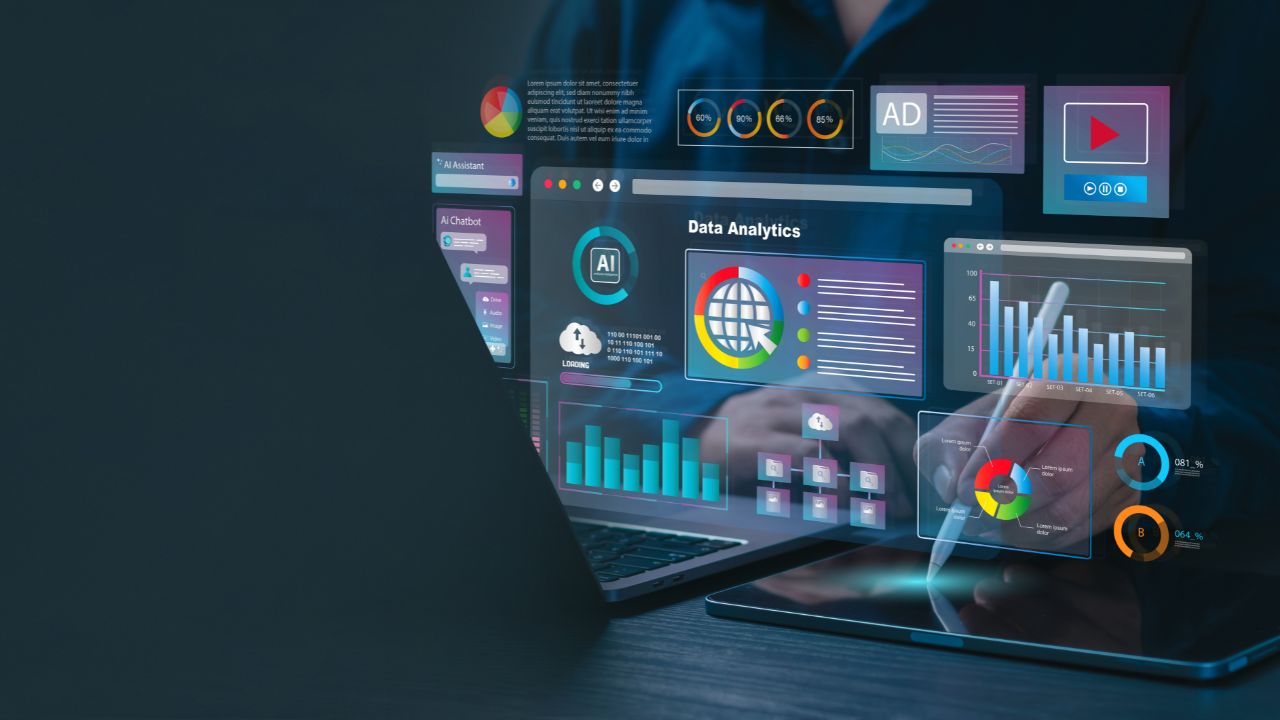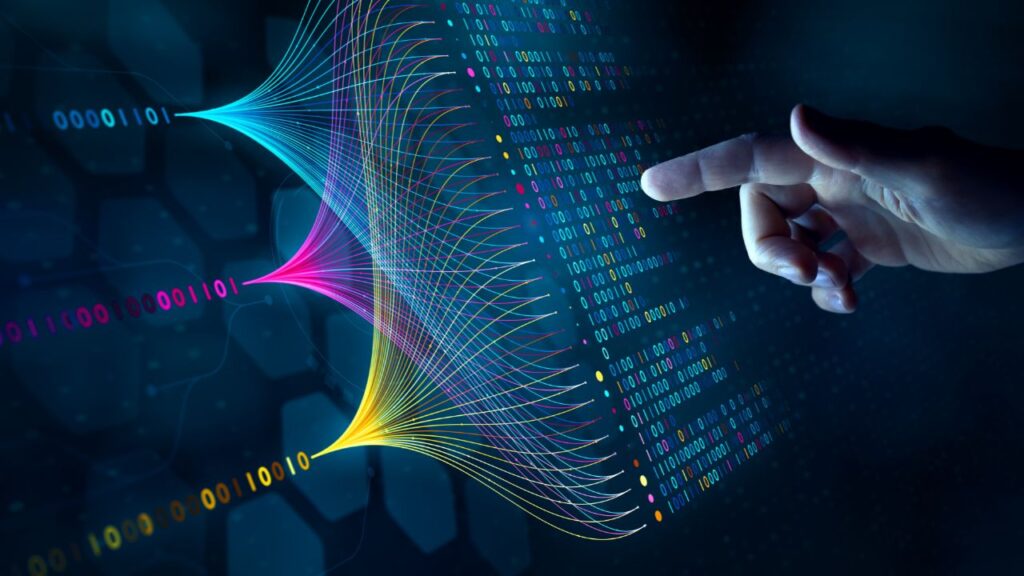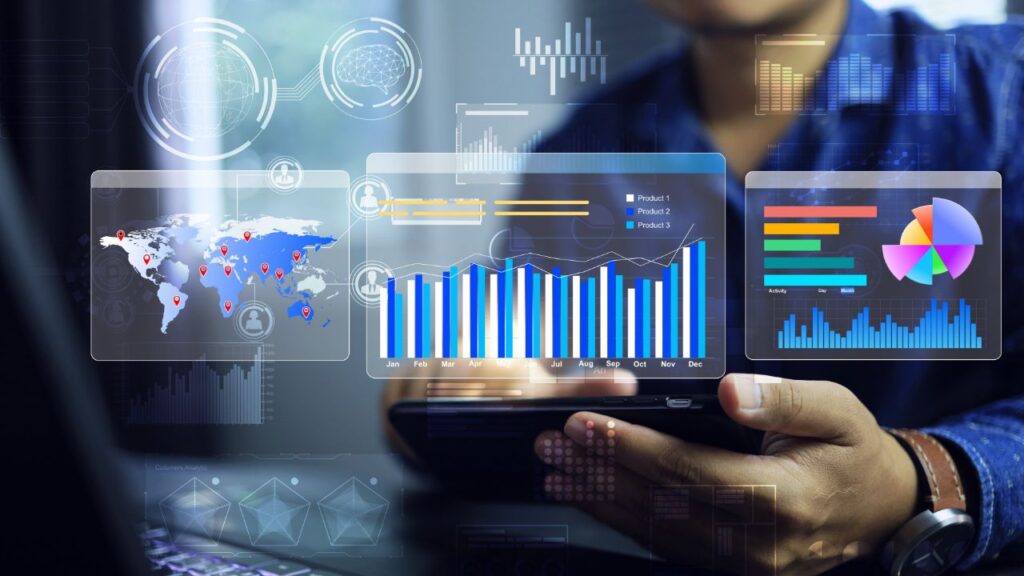Data analytics takes raw data and turns it into ideas that can be used. A lot of different platforms, tools, and methods are used to use data to find trends and solve problems. Data analytics can change how businesses work, help them make better decisions, and help them grow. Why is it important to look […]

Data analytics takes raw data and turns it into ideas that can be used. A lot of different platforms, tools, and methods are used to use data to find trends and solve problems. Data analytics can change how businesses work, help them make better decisions, and help them grow.
Why is it important to look at data?
Data analytics helps businesses see their processes and services more clearly and understand them better. It gives them a lot of information about how customers feel and what troubles they are having. Companies can make personalized experiences for customers, related digital goods, run more efficiently, and get more work done by their employees by moving beyond data and connecting insights with action.
What does “big data analytics” mean?

Big data is a term for very large amounts of organized, unstructured, and semi-structured data that are being created very quickly and in large amounts. Terabytes or petabytes are often used to describe big data. A petabyte is the same as 1,000,000 gigabytes for size. To give you an idea of how big this is, think about how much data is in a single HD movie. Two hundred thousand movies are equal to one petabyte. The size of very large files can range from a few hundred to several million petabytes.
Big data analytics is the study of huge data sets to find patterns, trends, and connections. For these complex analytics to work, they need certain technologies and tools, as well as a lot of computing power and space to store data.
How does the analysis of big data work?

To look at any large collection, big data analytics uses five steps:
- Gathering of data
- Storage for data
- Processing of data
- Cleaning up data
- Studying the data
- Gathering of data
Data collection
This means finding sources of data and getting data from them. After ETL or ELT steps, data collection happens.
Extract, Transform, and Load (ETL)
In ETL, the data that is created is first changed into a common file, and then it is saved.
Extract Load Transform (ELT)
In ELT, the data is first put into storage and then changed into the format that is needed.
Storage for data
Different types of data can be stored in different places, like cloud data stores or data lakes. It can be accessed when needed by business data tools. Storage for data Different types of data can be stored in different places, like cloud data stores or data lakes. It can be accessed when needed by business data tools.
Data lakes and data stores side by side
A data warehouse is a type of database that is designed to handle relational data from business tools and transactional systems. The data structure and schema are set up ahead of time so that finding and reporting can be done quickly. To be the “single source of truth” that users can believe, data is cleaned, added to, and changed. Profiles of customers and details about products are examples of data.
You can store both organized and unstructured data in a data lake without having to do any more work with the data. When data is captured, its structure, or schema, is not set. This means that you can keep all of your data without carefully planning
how it will be used in the future?
which is helpful when you don’t know what that use will be. Some examples of data are material from social media, data from Internet of Things (IoT) devices, and unrelated data from mobile apps.
Processing of data

Once the data is collected, it needs to be transformed and put in the right order so that analytical questions give correct results. To do this, you can use different types of data processing. Which method to use depends on the computing and analysis power that is available for handling the data.
Processing in one place
Processing takes place on a single server that stores all the data.
Processing spread out
Different computers store and send data to different places.
Batch processing
Over time, bits of info build up and are processed in groups.
Processing in real time
Data is constantly being processed, and computer jobs are finished in seconds.
Cleaning up data
When you clean up data, you look for mistakes like duplicates, inconsistencies, redundancies, or wrong forms. It’s also used to get rid of any analytics info that isn’t needed.
Studying the data
In this step, raw data is turned into ideas that can be used. There are four different kinds of data analytics, which are:
1. Analysis that describes
Scientists who work with data look at it to figure out what happened or is happening in the data world. It shows data in different ways, like with pie charts, bar charts, line graphs, tables, or automatically created stories.
2. Analysis of diagnostics
Diagnostic analytics is a way to look into a lot of data to find out what happened and why it happened. Some of the methods that make it up are drill-down, data discovery, data mining, and correlations. Each of these methods uses a number of different processes and transformations on raw data in order to look at it.
3. Analytics for prediction
Predictive analytics looks at past data to make good guesses about how things will change in the future. Machine learning, forecasting, pattern matching, and predictive modeling are some of the methods that make it up. For all of these methods, computers are taught to find causality links in data and figure out what they mean.
4. Use of prescriptive analytics
Prescriptive analytics is the next step after prediction analytics. It not only tells you what is most likely to happen, but it also offers the best way to deal with that outcome. It can look at what might happen if you make different decisions and suggest the best thing to do. Complex event processing, neural networks, recommendation systems, and graph analysis are some of the things that make it up.
What are the different ways to look at data?
In data analytics, a lot of different types of computers are used. Here are a few of the most popular ones:
Processing of natural words
Natural language processing is the field of technology that lets computers understand spoken and written language and react to it. This method is used by data analysts to handle data like voice commands, chat messages, and dictated notes.
Reading text
Text data like emails, tweets, study papers, and blog posts can be mined by data analysts to find trends. You can use it to organize news stories, customer comments, and emails from clients.
Analysis of sensor data
The study of the data made by different devices is called sensor data analysis. It’s used for tracking shipments, predicting when machines will break down, and other business tasks where robots create data.
Analysis of outliers
Finding data points and events that are different from the rest of the data is called outlier analysis or anomaly identification.
Can data analysis be done by a computer?
Yes, data scientists can make processes more efficient and automated. The process of using computers to do critical work with little or no help from a person is called automated data analytics. There is a range of complexity in these processes, from simple scripts or lines of code to data analytics tools that model data, find features, and do statistical analysis.
For example, a cybersecurity company might use automation to collect data from big amounts of web activity, then do more analysis and use data visualization to show the results and help make business decisions.
Can someone else do the data analysis?
Organizations can efficiently engage external assistance for data analysis, enabling management to focus on other essential domains. Specialized teams in business analytics feature proficiency in contemporary data analysis methodologies, allowing for expedited data examination, pattern recognition, and precise forecasting of future trends. Nonetheless, outsourcing may elicit apprehensions pertaining to knowledge dissemination and data confidentiality. Jainya Tele Enterprises Private Limited mitigates these concerns by ensuring data privacy protection.
Data mining builds a better picture of the customer
Data analytics can be done on sets of data from a number of different customer data sources, such as
- Polls of customers by a third party
- Logs of what customers buy
- Activity on social media
- Cookies on computers
- Statistics about a website or app
Analytics can show you things you didn’t know, like what pages on a website people like to visit most, how long people stay on a website, their reviews, and how they use website forms. This makes it easier for businesses to meet customer wants and makes customers happier.
Case Study: How Companies Improved Customer Experience using Data Analytics
Data analytics is essential for improving customer experience. Companies can personalize their services and goods by using data to understand client behavior, preferences, and needs. Here are several companies that improved customer experience with data analytics.
Amazon
Amazon demonstrates how data analytics may improve customer experience. Customer interactions, purchasing history, and surfing behavior are heavily tracked by the corporation. This data is examined for personalized recommendations, shopping efficiency, and inventory management. Amazon can grow sales and customer loyalty by anticipating requirements and improving satisfaction by understanding client preferences.
Starbucks
Starbucks uses data analytics to improve service and customer engagement. This organization analyzes client purchase data and feedback to find trends and preferences. This information helps Starbucks improve its marketing, product offers, and store experience. To encourage return visits, the Starbucks Rewards program leverages data to personalize incentives and promotions.
UPS
UPS improves productivity and customer happiness with big data analytics. UPS optimises logistics and delivery times by analysing delivery routes and customer feedback. The company uses predictive analytics to anticipate consumer needs and improve service reliability, improving customer experience.
AT&T
AT&T uses data analytics to improve customer service. AT&T finds ways to improve by tracking consumer usage, service requests, and satisfaction. The data-driven strategy enables the organization to improve service quality, solve customer problems, and create new products that meet expectations.
Long Island PSEG
Interaction analytics helped PSEG Long Island enhance call center operations and customer service. By examining call data, the organization recognized customer inquiry and concern trends and implemented operational improvements to lower call volumes and increase response times. Our proactive approach to customer service has significantly increased client satisfaction.
Leave a Comment